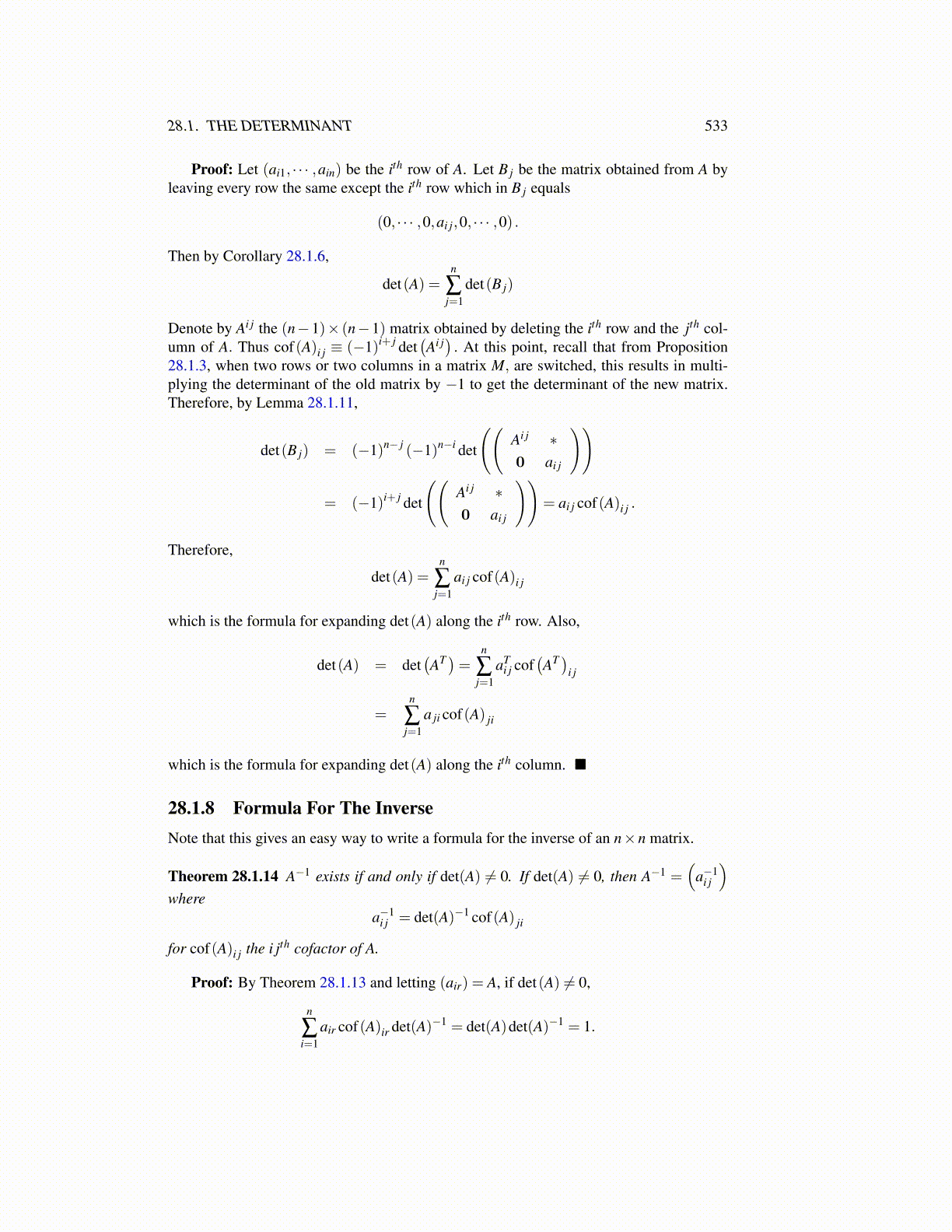
28.1. THE DETERMINANT 533
Proof: Let (ai1, · · · ,ain) be the ith row of A. Let B j be the matrix obtained from A byleaving every row the same except the ith row which in B j equals
(0, · · · ,0,ai j,0, · · · ,0) .
Then by Corollary 28.1.6,
det(A) =n
∑j=1
det(B j)
Denote by Ai j the (n−1)× (n−1) matrix obtained by deleting the ith row and the jth col-umn of A. Thus cof(A)i j ≡ (−1)i+ j det
(Ai j). At this point, recall that from Proposition
28.1.3, when two rows or two columns in a matrix M, are switched, this results in multi-plying the determinant of the old matrix by −1 to get the determinant of the new matrix.Therefore, by Lemma 28.1.11,
det(B j) = (−1)n− j (−1)n−i det
((Ai j ∗0 ai j
))
= (−1)i+ j det
((Ai j ∗0 ai j
))= ai j cof(A)i j .
Therefore,
det(A) =n
∑j=1
ai j cof(A)i j
which is the formula for expanding det(A) along the ith row. Also,
det(A) = det(AT )= n
∑j=1
aTi j cof
(AT )
i j
=n
∑j=1
a ji cof(A) ji
which is the formula for expanding det(A) along the ith column. ■
28.1.8 Formula For The InverseNote that this gives an easy way to write a formula for the inverse of an n×n matrix.
Theorem 28.1.14 A−1 exists if and only if det(A) ̸= 0. If det(A) ̸= 0, then A−1 =(
a−1i j
)where
a−1i j = det(A)−1 cof(A) ji
for cof(A)i j the i jth cofactor of A.
Proof: By Theorem 28.1.13 and letting (air) = A, if det(A) ̸= 0,
n
∑i=1
air cof(A)ir det(A)−1 = det(A)det(A)−1 = 1.